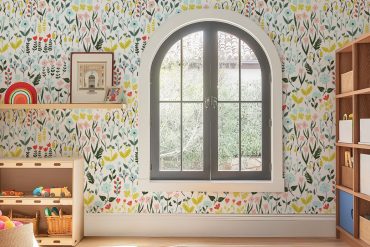As pattern designers, we are all passionate about our work and creating unique designs. We want our pattern design collections to feel fresh, creative, and authentic to our brand and artistic style.
We each want our artwork to stand out in the crowded surface pattern design marketplace, while also being representative of what is special about our personalities. And as unique as our artistic styles and experiences are, so many of us are still forcing ourselves to use systems and formulas that don’t work well for us.
In this day and age, we are surrounded by teachers, mentors, designers, and artists sharing their processes and techniques everywhere, from Instagram to YouTube. And learning these techniques can be incredibly inspiring, and helpful. They help us to achieve our goals more quickly, learning from other’s mistakes and their successes.
But adopting someone else’s process comes with a downside, as well.
Creating Pattern Design Collections
Here’s what I see happening to so many designers in our industry:
We invest in a course, a coach, or a book to learn new techniques and grow as a designer. We see that this method worked for others and we feel like “this is the way,” this is how I should be working. And sometimes this new process works out great for us. Then at other times, it does not work. Still, we stick with it and keep forcing ourselves to use a system that isn’t serving our process. Eventually we get frustrated, and self-doubt begins creeping in, causing us to feel like we aren’t good enough, or talented enough, or not enough in some way.
When really, it’s just that we are trying to force our unique style into someone else’s system. Someone else’s way of creating, working, and sharing their work with the world.
So, what’s the solution? Give up learning from others and do it all on our own?
Of course not.
Finding Your Process
What we should be doing, and what I am encouraging members of the Textile Design Lab to do, is to take these processes, these methods, and adjust them as needed to best fit our individual style and way of working.
Our design processes should serve us, not diminish our creativity.
But how do you know? How do you know when a system is not serving you?
One exercise that I did recently was to document my current design process. I say “current” because my design process changes over time, adjusting to fit my lifestyle, energy level, and interest at the time.
Documenting this design process, or workflow, was really helpful for me to see where there is room for improvement and all the steps that I am taking to create pattern design collections.

About now, you may be wondering, what does your method look like?
In our Sellable Sketch course, starting October 7th, 2024, in our Textile Design Lab community, we cover one way of creating pattern design collections, but we also discuss discovering one’s artistic style, trend research, and preparing files for clients. It’s an in-depth course that has helped hundreds of designers get on the right track. A track that leads them to discovering their own collection development process.
Some designers choose to add extra steps, others choose to take out some steps if they are not needed. My hope is that the course is a solid jumping off point for designers to make their own unique processes that support their creative businesses.
Listening to our creative intuition helps us to connect with the tips and techniques that will best serve our creative process. When this happens, it feels amazing. Self-doubt and insecurity go out the window, allowing creativity to come flooding in. It feels so good.
Take some time to think about how you’re creating pattern design collections. What methods work wonderfully for you? Where is their room for—or a desire to—make an adjustment? If you choose to share your collection development workflow on social media, please tag me @patternobserver so that I can check it out. I’d love to hear from you.














